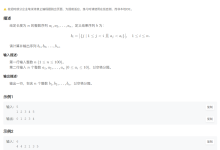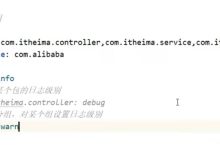构建一个完整的微服务架构涉及多个组件和技术栈,下面是一个详细的指南,涵盖常见的微服务架构组件(如 Redis、RabbitMQ、ELK Stack、Docker、热部署等),以及如何配置和部署这些组件。
1. 微服务架构概述
微服务架构将应用程序分解为一组小的、独立的服务,每个服务运行在自己的进程中,并通过轻量级机制(通常是 HTTP API)进行通信。这些服务可以独立部署、扩展和维护。
常见微服务架构组件
- 服务注册与发现:Eureka、Consul、Zookeeper
- 配置中心:Spring Cloud Config、Apollo
- API 网关:Spring Cloud Gateway、Kong
- 服务调用:Feign、RestTemplate
- 熔断器:Hystrix、Resilience4j
- 缓存数据库:Redis
- 消息队列:RabbitMQ、Kafka
- 日志管理:ELK Stack(Elasticsearch, Logstash, Kibana)
- 容器化:Docker
- 编排工具:Kubernetes
- 热部署:Spring Boot DevTools、JRebel
2. 使用的技术栈
- 编程语言:Java (Spring Boot)
- 缓存数据库:Redis
- 消息队列:RabbitMQ
- 日志管理:ELK Stack (Elasticsearch, Logstash, Kibana)
- 容器化:Docker
- 编排工具:Docker Compose (简化部署)
- 热部署:Spring Boot DevTools
3. 微服务架构示例
假设我们有一个简单的微服务架构,包含以下服务:
- User Service:用户管理服务
- Order Service:订单管理服务
- Product Service:产品管理服务
- API Gateway:统一入口
3.1 服务注册与发现
使用 Eureka 作为服务注册与发现中心。
3.1.1 创建 Eureka Server
pom.xml
xml
<dependencies>
<dependency>
<groupId>org.springframework.cloud</groupId>
<artifactId>spring-cloud-starter-netflix-eureka-server</artifactId>
</dependency>
</dependencies>
application.yml
yaml
server:
port: 8761
eureka:
client:
register-with-eureka: false
fetch-registry: false
service-url:
defaultZone: http://localhost:8761/eureka/
EurekaServerApplication.java
java
package com.example.eurekaserver;
import org.springframework.boot.SpringApplication;
import org.springframework.boot.autoconfigure.SpringBootApplication;
import org.springframework.cloud.netflix.eureka.server.EnableEurekaServer;
@SpringBootApplication
@EnableEurekaServer
public class EurekaServerApplication {
public static void main(String[] args) {
SpringApplication.run(EurekaServerApplication.class, args);
}
}
3.2 API Gateway
使用 Spring Cloud Gateway 作为 API 网关。
3.2.1 创建 API Gateway 服务
pom.xml
xml
<dependencies>
<dependency>
<groupId>org.springframework.cloud</groupId>
<artifactId>spring-cloud-starter-gateway</artifactId>
</dependency>
<dependency>
<groupId>org.springframework.cloud</groupId>
<artifactId>spring-cloud-starter-netflix-eureka-client</artifactId>
</dependency>
</dependencies>
application.yml
yaml
server:
port: 8080
spring:
application:
name: api-gateway
cloud:
gateway:
routes:
– id: user-service
uri: lb://user-service
predicates:
– Path=/users/**
– id: order-service
uri: lb://order-service
predicates:
– Path=/orders/**
– id: product-service
uri: lb://product-service
predicates:
– Path=/products/**
eureka:
client:
service-url:
defaultZone: http://localhost:8761/eureka/
ApiGatewayApplication.java
java
package com.example.apigateway;
import org.springframework.boot.SpringApplication;
import org.springframework.boot.autoconfigure.SpringBootApplication;
import org.springframework.cloud.netflix.eureka.EnableEurekaClient;
@SpringBootApplication
@EnableEurekaClient
public class ApiGatewayApplication {
public static void main(String[] args) {
SpringApplication.run(ApiGatewayApplication.class, args);
}
}
3.3 User Service
3.3.1 创建 User Service
pom.xml
xml
<dependencies>
<dependency>
<groupId>org.springframework.boot</groupId>
<artifactId>spring-boot-starter-web</artifactId>
</dependency>
<dependency>
<groupId>org.springframework.cloud</groupId>
<artifactId>spring-cloud-starter-netflix-eureka-client</artifactId>
</dependency>
<dependency>
<groupId>org.springframework.boot</groupId>
<artifactId>spring-boot-starter-data-jpa</artifactId>
</dependency>
<dependency>
<groupId>com.h2database</groupId>
<artifactId>h2</artifactId>
<scope>runtime</scope>
</dependency>
<dependency>
<groupId>org.springframework.boot</groupId>
<artifactId>spring-boot-devtools</artifactId>
<scope>runtime</scope>
</dependency>
</dependencies>
application.yml
yaml
server:
port: 0
spring:
application:
name: user-service
datasource:
url: jdbc:h2:mem:testdb
driver-class-name: org.h2.Driver
username: sa
password:
jpa:
hibernate:
ddl-auto: update
show-sql: true
eureka:
client:
service-url:
defaultZone: http://localhost:8761/eureka/
User.java
java
package com.example.userservice.model;
import javax.persistence.Entity;
import javax.persistence.GeneratedValue;
import javax.persistence.GenerationType;
import javax.persistence.Id;
@Entity
public class User {
@Id
@GeneratedValue(strategy = GenerationType.IDENTITY)
private Long id;
private String name;
private String email;
// Getters and Setters
}
UserRepository.java
java
package com.example.userservice.repository;
import com.example.userservice.model.User;
import org.springframework.data.jpa.repository.JpaRepository;
public interface UserRepository extends JpaRepository<User, Long> {
}
UserController.java
java
package com.example.userservice.controller;
import com.example.userservice.model.User;
import com.example.userservice.repository.UserRepository;
import org.springframework.beans.factory.annotation.Autowired;
import org.springframework.web.bind.annotation.*;
import java.util.List;
@RestController
@RequestMapping("/users")
public class UserController {
@Autowired
private UserRepository userRepository;
@GetMapping
public List<User> getAllUsers() {
return userRepository.findAll();
}
@PostMapping
public User createUser(@RequestBody User user) {
return userRepository.save(user);
}
}
UserServiceApplication.java
java
package com.example.userservice;
import org.springframework.boot.SpringApplication;
import org.springframework.boot.autoconfigure.SpringBootApplication;
import org.springframework.cloud.netflix.eureka.EnableEurekaClient;
@SpringBootApplication
@EnableEurekaClient
public class UserServiceApplication {
public static void main(String[] args) {
SpringApplication.run(UserServiceApplication.class, args);
}
}
3.4 Order Service 和 Product Service
Order Service 和 Product Service 的结构与 User Service 类似,只需更改 application.yml 中的服务名称和端口。
Order Service application.yml
yaml
server:
port: 0
spring:
application:
name: order-service
datasource:
url: jdbc:h2:mem:testdb
driver-class-name: org.h2.Driver
username: sa
password:
jpa:
hibernate:
ddl-auto: update
show-sql: true
eureka:
client:
service-url:
defaultZone: http://localhost:8761/eureka/
Product Service application.yml
yaml
server:
port: 0
spring:
application:
name: product-service
datasource:
url: jdbc:h2:mem:testdb
driver-class-name: org.h2.Driver
username: sa
password:
jpa:
hibernate:
ddl-auto: update
show-sql: true
eureka:
client:
service-url:
defaultZone: http://localhost:8761/eureka/
4. 使用 Redis 作为缓存数据库
4.1 添加 Redis 依赖
在每个服务的 pom.xml 中添加 Redis 依赖:
xml
<dependency>
<groupId>org.springframework.boot</groupId>
<artifactId>spring-boot-starter-data-redis</artifactId>
</dependency>
4.2 配置 Redis
在 application.yml 中配置 Redis 连接:
yaml
spring:
redis:
host: localhost
port: 6379
4.3 使用 Redis 进行缓存
在 User Service 中使用 Redis 进行缓存示例:
UserCacheService.java
java
package com.example.userservice.service;
import com.example.userservice.model.User;
import com.example.userservice.repository.UserRepository;
import org.springframework.beans.factory.annotation.Autowired;
import org.springframework.cache.annotation.Cacheable;
import org.springframework.stereotype.Service;
@Service
public class UserCacheService {
@Autowired
private UserRepository userRepository;
@Cacheable(value = "users", key = "#id")
public User getUserById(Long id) {
return userRepository.findById(id).orElse(null);
}
}
UserServiceApplication.java 启用缓存:
java
package com.example.userservice;
import org.springframework.boot.SpringApplication;
import org.springframework.boot.autoconfigure.SpringBootApplication;
import org.springframework.cache.annotation.EnableCaching;
import org.springframework.cloud.netflix.eureka.EnableEurekaClient;
@SpringBootApplication
@EnableEurekaClient
@EnableCaching
public class UserServiceApplication {
public static void main(String[] args) {
SpringApplication.run(UserServiceApplication.class, args);
}
}
5. 使用 RabbitMQ 作为消息队列
5.1 添加 RabbitMQ 依赖
在每个服务的 pom.xml 中添加 RabbitMQ 依赖:
xml
<dependency>
<groupId>org.springframework.boot</groupId>
<artifactId>spring-boot-starter-amqp</artifactId>
</dependency>
5.2 配置 RabbitMQ
在 application.yml 中配置 RabbitMQ 连接:
yaml
spring:
rabbitmq:
host: localhost
port: 5672
username: guest
password: guest
5.3 使用 RabbitMQ 发送和接收消息
在 Order Service 中发送消息示例:
OrderService.java
java
package com.example.orderservice.service;
import org.springframework.amqp.core.AmqpTemplate;
import org.springframework.beans.factory.annotation.Autowired;
import org.springframework.stereotype.Service;
@Service
public class OrderService {
@Autowired
private AmqpTemplate amqpTemplate;
public void sendOrder(String order) {
amqpTemplate.convertAndSend("orderQueue", order);
}
}
在 User Service 中接收消息示例:
UserReceiver.java
java
package com.example.userservice.receiver;
import org.springframework.amqp.rabbit.annotation.RabbitListener;
import org.springframework.stereotype.Component;
@Component
public class UserReceiver {
@RabbitListener(queues = "orderQueue")
public void receiveMessage(String order) {
System.out.println("Received order: " + order);
}
}
6. 使用 ELK Stack 进行日志管理
6.1 安装 ELK Stack
使用 Docker Compose 安装 ELK Stack:
docker-compose.yml
yaml
version: '3'
services:
elasticsearch:
image: docker.elastic.co/elasticsearch/elasticsearch:7.10.2
container_name: elasticsearch
environment:
– discovery.type=single-node
ports:
– "9200:9200"
– "9300:9300"
logstash:
image: docker.elastic.co/logstash/logstash:7.10.2
container_name: logstash
volumes:
– ./logstash/pipeline:/usr/share/logstash/pipeline/
ports:
– "5044:5044"
depends_on:
– elasticsearch
kibana:
image: docker.elastic.co/kibana/kibana:7.10.2
container_name: kibana
ports:
– "5601:5601"
depends_on:
– elasticsearch
logstash/pipeline/logstash.conf
conf
input {
beats {
port => 5044
}
}
output {
elasticsearch {
hosts => ["http://elasticsearch:9200"]
index => "%{[@metadata][beat]}-%{[@metadata][version]}-%{+YYYY.MM.dd}"
}
}
启动 ELK Stack:
bash
docker-compose up -d
6.2 配置 Spring Boot 应用程序使用 Filebeat
在每个 Spring Boot 应用程序中添加 Filebeat 配置:
filebeat.yml
yaml
filebeat.inputs:
– type: log
enabled: true
paths:
– /var/log/*.log
output.logstash:
hosts: ["logstash:5044"]
在 Docker Compose 文件中添加 Filebeat 服务:
docker-compose.yml
yaml
version: '3'
services:
# 其他服务…
filebeat:
image: docker.elastic.co/beats/filebeat:7.10.2
container_name: filebeat
volumes:
– ./filebeat/filebeat.yml:/usr/share/filebeat/filebeat.yml
– /var/log:/var/log
depends_on:
– logstash
7. 使用 Docker 容器化服务
7.1 创建 Dockerfile
为每个服务创建 Dockerfile。以 User Service 为例:
Dockerfile
Dockerfile
FROM openjdk:17-jdk-slim
VOLUME /tmp
COPY target/user-service.jar user-service.jar
ENTRYPOINT ["java", "-jar", "/user-service.jar"]
7.2 构建 Docker 镜像
在每个服务目录下构建 Docker 镜像:
bash
mvn clean package
docker build -t user-service .
7.3 使用 Docker Compose 部署服务
创建 docker-compose.yml 文件来定义所有服务:
docker-compose.yml
yaml
version: '3'
services:
eureka-server:
image: eureka-server:latest
ports:
– "8761:8761"
networks:
– microservices-network
api-gateway:
image: api-gateway:latest
ports:
– "8080:8080"
networks:
– microservices-network
depends_on:
– eureka-server
user-service:
image: user-service:latest
networks:
– microservices-network
depends_on:
– eureka-server
– redis
– rabbitmq
order-service:
image: order-service:latest
networks:
– microservices-network
depends_on:
– eureka-server
– redis
– rabbitmq
product-service:
image: product-service:latest
networks:
– microservices-network
depends_on:
– eureka-server
– redis
– rabbitmq
redis:
image: redis:6.2
ports:
– "6379:6379"
networks:
– microservices-network
rabbitmq:
image: rabbitmq:3-management
ports:
– "5672:5672"
– "15672:15672"
networks:
– microservices-network
elasticsearch:
image: docker.elastic.co/elasticsearch/elasticsearch:7.10.2
container_name: elasticsearch
environment:
– discovery.type=single-node
ports:
– "9200:9200"
– "9300:9300"
networks:
– microservices-network
logstash:
image: docker.elastic.co/logstash/logstash:7.10.2
container_name: logstash
volumes:
– ./logstash/pipeline:/usr/share/logstash/pipeline/
ports:
– "5044:5044"
depends_on:
– elasticsearch
networks:
– microservices-network
kibana:
image: docker.elastic.co/kibana/kibana:7.10.2
container_name: kibana
ports:
– "5601:5601"
depends_on:
– elasticsearch
networks:
– microservices-network
filebeat:
image: docker.elastic.co/beats/filebeat:7.10.2
container_name: filebeat
volumes:
– ./filebeat/filebeat.yml:/usr/share/filebeat/filebeat.yml
– /var/log:/var/log
depends_on:
– logstash
networks:
– microservices-network
networks:
microservices-network:
driver: bridge
7.4 构建并启动所有服务
构建所有服务的 Docker 镜像:
bash
docker-compose build
启动所有服务:
bash
docker-compose up -d
8. 配置负载均衡
8.1 使用 Nginx 作为负载均衡器
创建一个 Nginx 配置文件来负载均衡 API Gateway 实例。
nginx.conf
nginx
events {
worker_connections 1024;
}
http {
upstream api-gateway {
server api-gateway-1:8080;
server api-gateway-2:8080;
# 可以根据需要添加更多 API Gateway 实例
}
server {
listen 80;
location / {
proxy_pass http://api-gateway;
proxy_set_header Host $host;
proxy_set_header X-Real-IP $remote_addr;
proxy_set_header X-Forwarded-For $proxy_add_x_forwarded_for;
proxy_set_header X-Forwarded-Proto $scheme;
}
}
}
8.2 使用 Docker Compose 启动 Nginx
在 docker-compose.yml 中添加 Nginx 服务:
yaml
version: '3'
services:
# 其他服务…
nginx:
image: nginx:latest
container_name: nginx
ports:
– "80:80"
volumes:
– ./nginx/nginx.conf:/etc/nginx/nginx.conf
depends_on:
– api-gateway
networks:
– microservices-network
启动所有服务后,Nginx 将会自动将请求分发到多个 API Gateway 实例,实现负载均衡。
9. 日志监控与消息监控
9.1 日志监控
使用 ELK Stack 进行日志管理。通过 Kibana 的可视化界面,可以实时查看和分析日志数据。
9.1.1 查看日志
9.1.2 创建仪表盘
9.2 消息监控
使用 RabbitMQ Management Plugin 监控 RabbitMQ 中的消息队列。
9.2.1 启用 RabbitMQ 管理插件
在 Docker Compose 文件中已经启用了 RabbitMQ 管理插件,可以通过以下命令手动启用:
bash
docker exec -it rabbitmq rabbitmq-plugins enable rabbitmq_management
9.2.2 访问 RabbitMQ 管理界面
10. 热部署配置
热部署允许在不重启应用程序的情况下更新代码。这里我们使用 Spring Boot DevTools 来实现热部署。
10.1 添加 DevTools 依赖
在每个 Spring Boot 应用程序的 pom.xml 中添加 DevTools 依赖:
xml
<dependency>
<groupId>org.springframework.boot</groupId>
<artifactId>spring-boot-devtools</artifactId>
<scope>runtime</scope>
<optional>true</optional>
</dependency>
10.2 配置 IDE 支持
10.2.1 IntelliJ IDEA
10.2.2 Eclipse
10.3 测试热部署
11. 总结
通过上述步骤,我们构建了一个完整的微服务架构,涵盖了服务注册与发现、API 网关、缓存数据库 Redis、消息队列 RabbitMQ、日志管理 ELK Stack、容器化 Docker、负载均衡 Nginx 以及热部署等功能。这个架构不仅能够满足高并发、分布式系统的开发需求,还提供了强大的监控和运维能力,确保系统的稳定性和可扩展性。
 网硕互联帮助中心
网硕互联帮助中心


![[TG开发]简单的回声机器人-网硕互联帮助中心](https://www.wsisp.com/helps/wp-content/uploads/2025/08/20250816114512-68a06f48800c8-220x150.png)



评论前必须登录!
注册